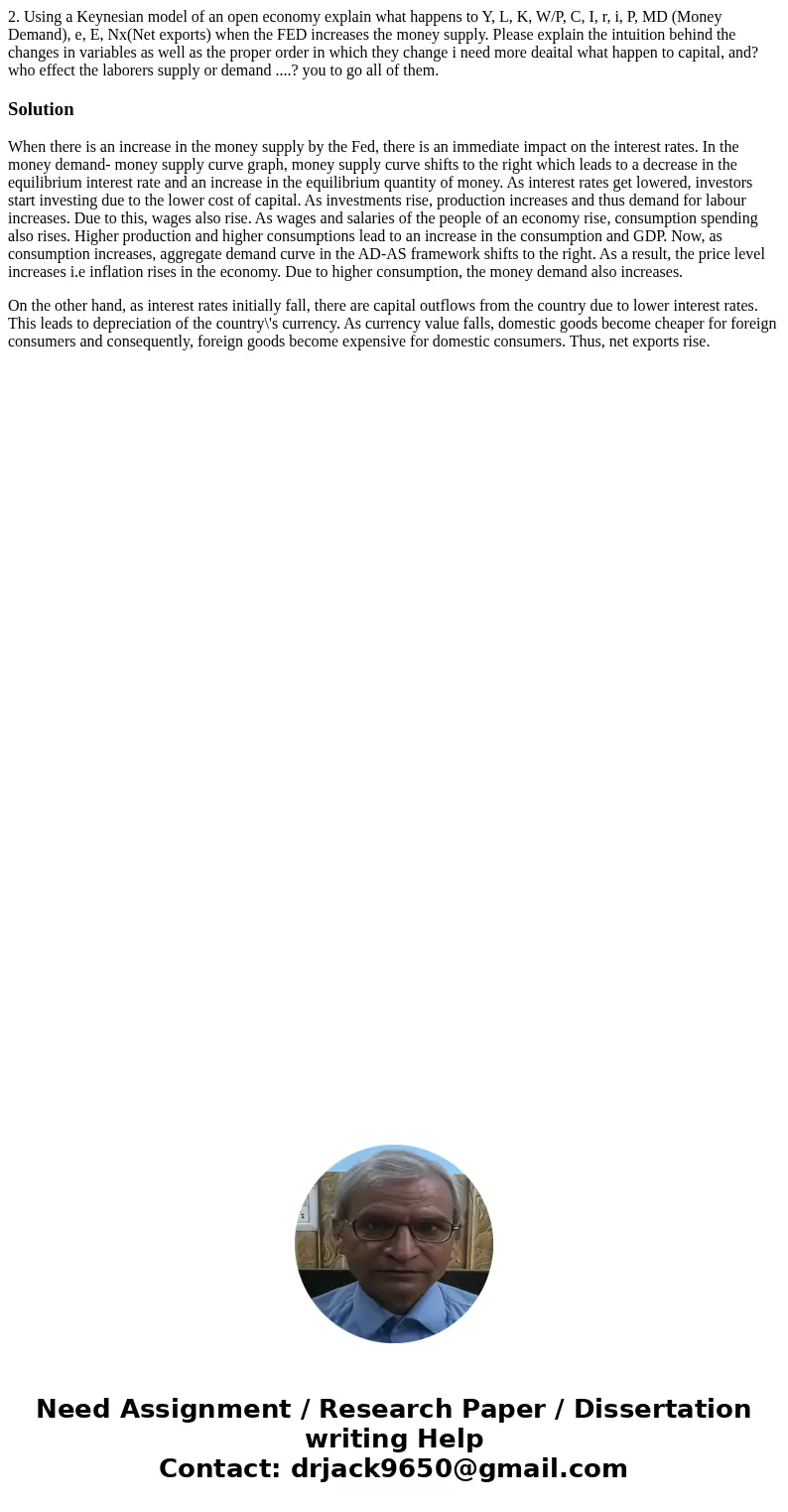2 Using a Keynesian model of an open economy explain what ha
2. Using a Keynesian model of an open economy explain what happens to Y, L, K, W/P, C, I, r, i, P, MD (Money Demand), e, E, Nx(Net exports) when the FED increases the money supply. Please explain the intuition behind the changes in variables as well as the proper order in which they change i need more deaital what happen to capital, and? who effect the laborers supply or demand ....? you to go all of them.
Solution
When there is an increase in the money supply by the Fed, there is an immediate impact on the interest rates. In the money demand- money supply curve graph, money supply curve shifts to the right which leads to a decrease in the equilibrium interest rate and an increase in the equilibrium quantity of money. As interest rates get lowered, investors start investing due to the lower cost of capital. As investments rise, production increases and thus demand for labour increases. Due to this, wages also rise. As wages and salaries of the people of an economy rise, consumption spending also rises. Higher production and higher consumptions lead to an increase in the consumption and GDP. Now, as consumption increases, aggregate demand curve in the AD-AS framework shifts to the right. As a result, the price level increases i.e inflation rises in the economy. Due to higher consumption, the money demand also increases.
On the other hand, as interest rates initially fall, there are capital outflows from the country due to lower interest rates. This leads to depreciation of the country\'s currency. As currency value falls, domestic goods become cheaper for foreign consumers and consequently, foreign goods become expensive for domestic consumers. Thus, net exports rise.

 Homework Sourse
Homework Sourse